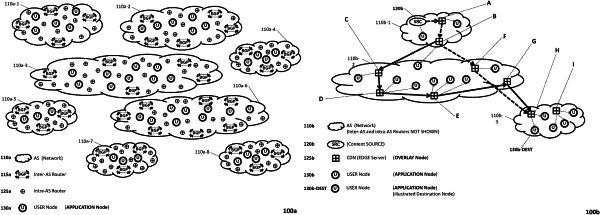| CPC H04L 41/12 (2013.01) [H04L 41/0813 (2013.01); H04L 41/147 (2013.01); H04L 43/08 (2013.01); H04L 43/0882 (2013.01); H04L 45/02 (2013.01); H04L 47/12 (2013.01); H04L 67/1076 (2013.01); H04L 41/5025 (2013.01); H04L 43/0888 (2013.01); H04L 45/64 (2013.01)] | 12 Claims |

|
1. A method of reconfiguring an overlay network in a manner intended to increase stability and reduce service interruptions, the overlay network including a plurality of nodes interconnected by links, the method comprising the steps of:
generating session duration predictions for prospective parent nodes to identify nodes that are likely remain part of the overlay network;
predicting the node-relaying capacity of prospective parent nodes;
identifying one or more supernodes, wherein supernodes are identified as nodes that have high node-relaying capacity and that they are likely to remain part of the overlay network based on their predicted session duration;
generating one or more prospective overlay network topologies in which supernodes are placed at higher levels of the overlay network topology; and
reconfiguring at least a portion of the overlay network in order to implement one of the one or more prospective overlay network topologies.
|